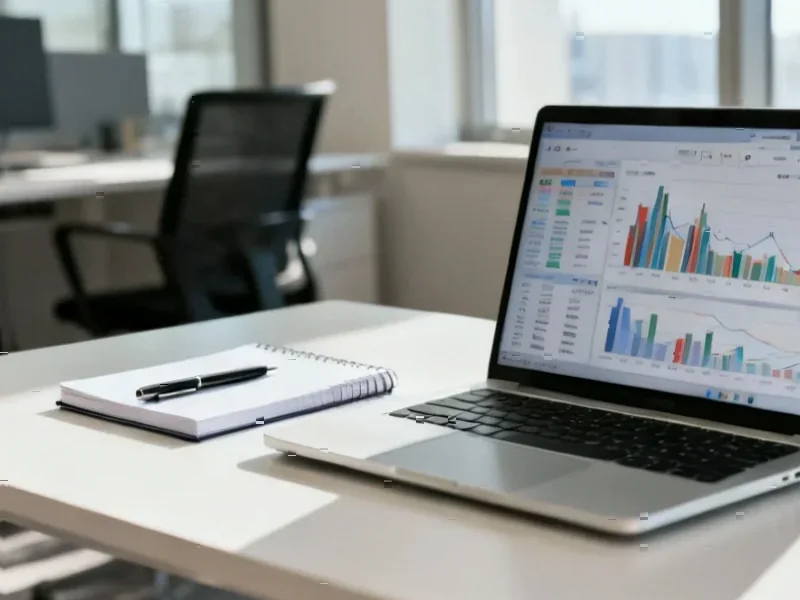According to EU-Startups, Dutch startup Source.ag has raised €15.2 million in Series B funding led by Astanor with strategic participation from seed breeder Enza Zaden and grower cooperative Harvest House. The Amsterdam-based company, founded in 2020 by Rien Kamman and Ernst van Bruggen, develops AI software for Controlled Environment Agriculture and has now raised over €52 million total. Their platform currently operates in 300 greenhouses across 18 countries, covering 2,500 hectares and supplying tomatoes, bell peppers, and cucumbers for approximately 40 million people. The funding will accelerate global scaling as the company aims to become the industry leader in AI-driven greenhouse management. This substantial investment signals a pivotal moment for applied AI in agriculture.
The AI Agriculture Consolidation Wave Begins
Source.ag’s funding represents more than just another agtech round—it marks the beginning of market consolidation in AI-driven agriculture. While numerous startups have emerged in the precision agriculture space, few have achieved the scale and industry validation that Source.ag demonstrates with its 300-greenhouse footprint. The strategic participation from Enza Zaden, a major seed breeder, and Harvest House, a grower cooperative, indicates that the technology is moving beyond pilot programs into core operational infrastructure. This creates a significant barrier for smaller competitors who lack both the capital and the industry partnerships to compete at scale.
Transforming the Entire Fresh Produce Supply Chain
The involvement of both upstream (seed breeding) and downstream (grower cooperative) partners reveals how AI is reshaping the entire fresh produce value chain. When a seed breeder like Enza Zaden integrates Source.ag’s AI strategies with their varieties, they’re creating a closed-loop system where data informs breeding decisions, which then optimize growing conditions. This vertical integration could eventually lead to proprietary seed-and-software bundles that lock growers into specific ecosystems. For retailers and consumers, this means more consistent quality and supply, but potentially less variety as the market consolidates around the most data-optimized crops.
Winners and Losers in the CEA Revolution
The clear winners in this shift are large-scale greenhouse operators who can afford to implement sophisticated AI systems and the technology providers like Source.ag who achieve first-mover advantage. Traditional outdoor farming operations face increasing pressure as CEA becomes more economically viable through AI optimization. Meanwhile, smaller AI startups in the space will likely face acquisition or obsolescence unless they can demonstrate unique capabilities that complement rather than compete with established platforms. The parallel funding for companies like SugaROx suggests that adjacent technologies in biostimulants and crop enhancement may become natural acquisition targets for platforms like Source.ag seeking to expand their product suites.
The Scaling Challenge: From European Success to Global Dominance
While Source.ag’s current footprint across 18 countries is impressive, the real test begins now. Scaling agricultural AI globally requires navigating diverse regulatory environments, climate conditions, and market structures. The company’s success in European greenhouse operations doesn’t guarantee similar performance in markets with different growing practices, labor costs, and infrastructure. Additionally, as they expand, they’ll face competition from regional players who understand local conditions better. The Astanor-led funding provides the war chest for this expansion, but execution will determine whether they become the global standard or remain a regional powerhouse.
What This Means for AgriTech Investment
Source.ag’s funding during a period of relatively few publicly reported rounds in AI-driven CEA suggests investors are becoming more selective, backing proven platforms with demonstrated scale and revenue. The era of funding conceptual agtech ideas is ending—investors now want to see measurable impact and commercial traction. This could create a bifurcated market where a handful of well-funded platforms dominate while earlier-stage startups struggle to secure funding without clear paths to profitability and scale. The success of Source.ag’s expansion will likely determine whether venture capital continues flowing into applied agricultural AI or retreats to safer tech sectors.
The Climate Resilience Imperative
Beyond commercial considerations, Source.ag’s growth reflects the urgent need for climate-resilient food production systems. As traditional agriculture faces increasing pressure from extreme weather, water scarcity, and soil degradation, controlled environment agriculture with AI optimization offers a viable path forward. The platform’s ability to predict yields with greater accuracy and automate irrigation addresses fundamental constraints in human-managed systems. This technology could become essential infrastructure for food security in regions most affected by climate change, potentially opening massive new markets beyond the current focus on high-value crops like tomatoes and peppers.




